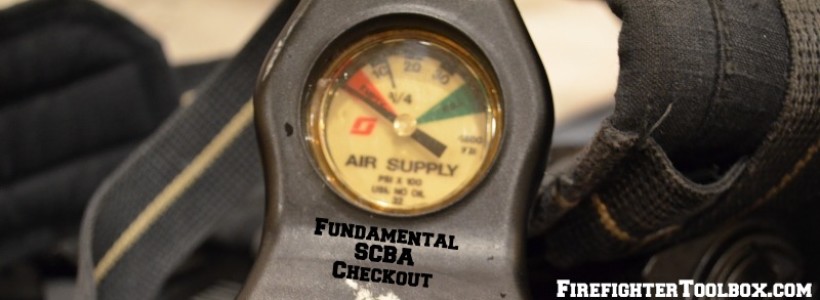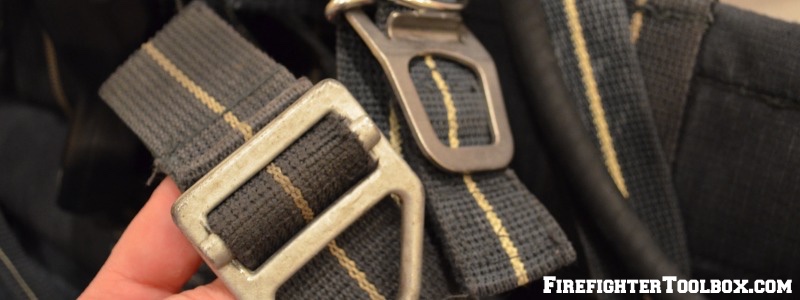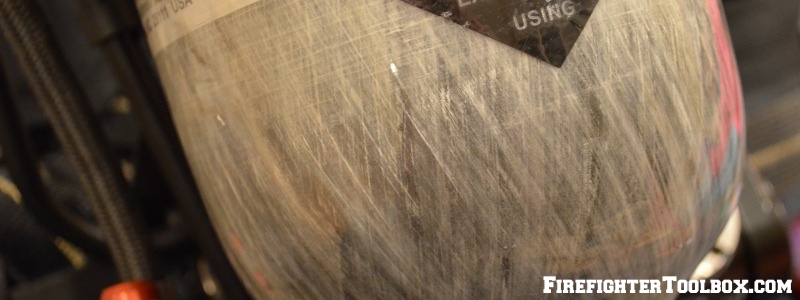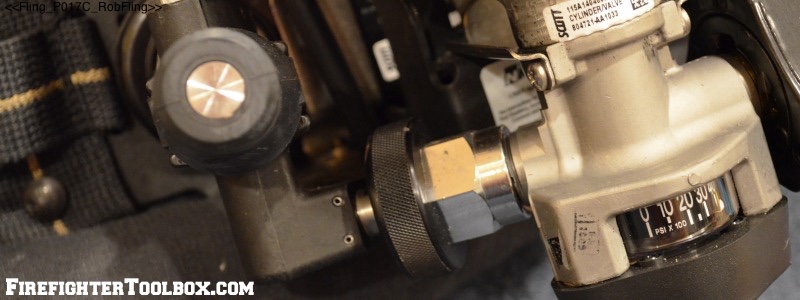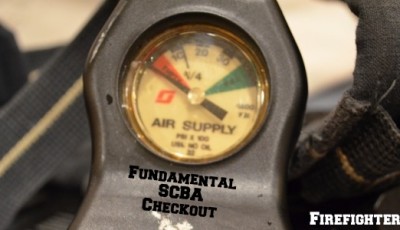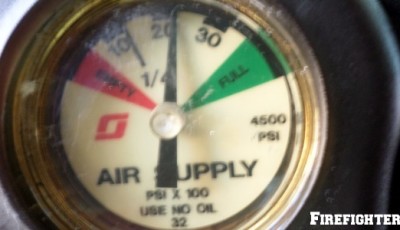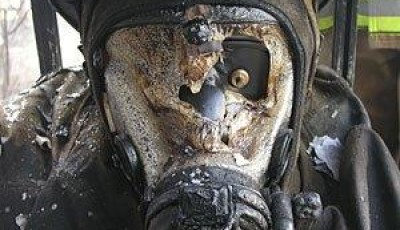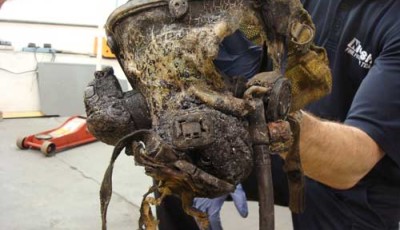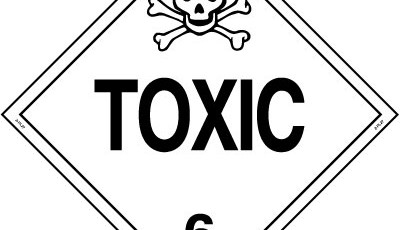Fundamentals Of The SCBA Checkout – Part 1
One of our most important pieces of personal protective equipment is our self-contained breathing apparatus (SCBA). It enables us to breath in an environment where we would not be able to otherwise, it alerts others when we may be in trouble and if worn properly and consistently it will maintain the health of our respiratory system despite the hazardous fumes we frequently breathe.
We know we need to inspect and check our SCBA regularly, but many do not go beyond making sure there is air in the cylinder. Let us examine today how we should be checking out our SCBA on a regular basis.
To get started take the SCBA out of the seat so you can get a good look at the entire unit. Inspect the entire unit for any obvious signs of damage.
Make sure that both shoulder straps as well as the waist strap are extended all the way open. Trying to squeeze into a mask that is half the size that it is supposed to be is no fun. While you are extending the straps pay close attention for straps that are twisted that would make it hard to tighten down as well as any strap that may be torn or frayed.
Are the buckles damaged at all, does the waist strap close properly? If you have an escape system attached to your SCBA do a visual inspection on it as well. If you happen to need it you will not want to find out at that point that it should have been taken out of service. Inspect the back plate to make sure that it is in good shape as well as how the cylinder straps into the back plate.
Inspect the cylinder for obvious signs of wear. You should not see any of the carbon fiber worn off to where you can see the fiberglass. This can commonly happen especially during training. If the cylinder happens to be dragged across a rough surface such as the apparatus floor it can cause enough damage that the cylinder needs to be replaced.
Look at the gauge on the cylinder itself, is it reading full? If it is not change the cylinder, those last few pounds of air in that cylinder maybe what is needed to get you out.
Ensure the high pressure hose is attached to the cylinder tightly, inspect that hose up to the pressure reducer. If you happen to have a rapid intervention connection (universal air connection) on your mask inspect that as well at this time.
Inspect the low pressure hose as well and also the remote pressure gauge. I have seen the metal hoses that are attached to the remote pressure gauge occur some damage at times, especially where they attach into the bottom of the gauge assembly.
Look at your hose that runs up to the regulator that attaches to your face piece. Does it swivel on the regulator freely?
In part two of this series we will complete our SCBA check. Please leave any questions you may have in the comments section.

